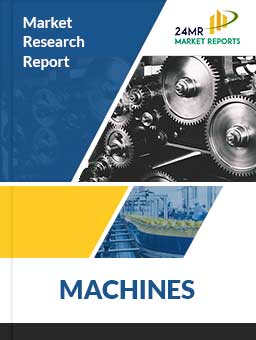
COMPANIES COVERED
KION DematicDownload FREE Report Sample
Download Free sampleThe Global Warehousing Automation Market refers to the integration of advanced technologies such as robotics, artificial intelligence (AI), Internet of Things (IoT), and warehouse management software into warehousing operations to enhance efficiency, accuracy, and productivity. This market encompasses solutions that automate tasks such as inventory management, order fulfillment, and material handling, significantly reducing human intervention. Warehousing automation caters to industries like retail, healthcare, manufacturing, and transportation, providing tailored solutions for each sector's unique requirements.
The Global Warehousing Automation Market was valued at US$ 25.74 billion in 2024 and is projected to grow at a robust CAGR of 16.20% during the forecast period (2024-2030), reaching a market size of approximately US$ 63.4 billion by 2030.
The rapid adoption of intelligent warehousing solutions by companies worldwide has driven this growth. Historical data shows consistent investment in automation technologies, driven by the demand for faster order processing, increased accuracy, and enhanced customer satisfaction.
Drivers:
Growing E-commerce Industry: The surge in online shopping has increased the demand for efficient and quick warehousing solutions.
Rising Labor Costs: Automation reduces dependency on human labor, addressing challenges related to rising wages and labor shortages.
Technological Advancements: Innovations in robotics, AI, and IoT are making warehouse automation more accessible and efficient.
Demand for Real-Time Data: Businesses are increasingly relying on real-time analytics for better decision-making.
Restraints:
High Initial Investment: Implementing warehouse automation requires significant capital expenditure.
Complex Integration: Integrating new systems with existing infrastructure can be challenging and time-consuming.
Cybersecurity Concerns: Increased reliance on digital systems raises the risk of cyber threats.
Opportunities:
Emerging Markets: Developing regions like Asia-Pacific and South America offer untapped potential for automation solutions.
Customization: Solutions tailored to specific industries and business sizes provide opportunities for growth.
Sustainability Goals: Automation technologies that promote energy efficiency and sustainability are gaining traction.
Challenges:
Workforce Resistance: Employees may resist automation due to fears of job displacement.
Maintenance and Downtime: Ensuring seamless operation and addressing technical issues promptly remain critical.
North America:
North America leads the warehousing automation market due to early adoption of advanced technologies and the presence of major players. The region’s robust e-commerce infrastructure has further accelerated the demand for automation.
Europe:
Europe is a significant player, with countries like Germany, the UK, and France spearheading innovation in warehouse automation. Stringent regulations on labor safety and efficiency drive adoption in this region.
Asia-Pacific:
The Asia-Pacific region is experiencing rapid growth due to the expanding manufacturing and retail sectors. Countries like China, Japan, and India are investing heavily in automation to meet growing consumer demands.
South America:
South America, led by Brazil and Argentina, is an emerging market with increasing adoption of automation in the retail and logistics sectors.
Middle East and Africa:
The Middle East and Africa show promising potential, with nations like the UAE and South Africa investing in smart warehousing solutions to enhance regional logistics capabilities.
Key players in the Global Warehousing Automation Market include:
KION Dematic: Known for innovative warehouse management solutions.
Honeywell Intelligrated: Specializes in automated material handling solutions.
SSI Schaefer: A global leader in intralogistics solutions.
Daifuku: Renowned for its advanced conveyor systems and automated storage.
Knapp: Offers cutting-edge warehouse automation technologies.
Toyota Industries (Bastian Solutions, Vanderlande): Delivers integrated solutions for diverse industries.
TGW: Focuses on high-performance conveyor systems.
Material Handling Systems: Known for scalable solutions.
Witron: Provides comprehensive intralogistics solutions.
Kuka Swisslog: Excels in robotic automation.
Muratec: Specializes in material handling and automation solutions.
Retail: Dominates the application segment due to the e-commerce boom.
Healthcare: Increasing demand for precision and efficiency in pharmaceutical warehousing.
Manufacturing: Automation streamlines production lines and inventory management.
Transport: Enhances logistics efficiency and reduces operational costs.
Others: Includes food and beverage, chemicals, and more.
Software: Encompasses warehouse management systems (WMS) and analytics platforms.
Hardware: Includes robots, conveyors, and automated storage and retrieval systems (AS/RS).
The warehousing automation market is shaped by several key players, each leveraging innovative strategies to enhance their market share:
The warehousing automation market demonstrates varied growth patterns across regions:
North America: Dominates due to strong e-commerce demand and significant investment in technology.
Europe: Boasts advanced automation technology adoption, particularly in Western Europe.
Asia-Pacific: Emerging as a growth hub driven by expanding retail and manufacturing industries.
South America: An untapped market with growing interest in automation technologies.
Middle East and Africa: Investments in logistics infrastructure are fueling growth in select nations like the UAE and South Africa.
1 What is the current market size of the Global Warehousing Automation Market?
The market size was valued at US$ 25.74 billion in 2024.
2 Which are the key companies operating in the Global Warehousing Automation Market?
Prominent players include KION Dematic, Honeywell Intelligrated, SSI Schaefer, Daifuku, Knapp, and others.
3 What are the key growth drivers in the Global Warehousing Automation Market?
Major growth drivers include the e-commerce boom, rising labor costs, and advancements in robotics and AI.
4 Which regions dominate the Global Warehousing Automation Market?
North America leads, followed by Europe and Asia-Pacific.
5 What are the emerging trends in the Global Warehousing Automation Market?
Emerging trends include customized solutions, sustainability-focused automation, and real-time data analytics.
Key Benefits of This Market Research:
Customization of the Report
In case of any queries or customization requirements, please connect with our sales team, who will ensure that your requirements are met.
Chapter Outline
Chapter 1 mainly introduces the statistical scope of the report, market division standards, and market research methods.
Chapter 2 is an executive summary of different market segments (by region, product type, application, etc), including the market size of each market segment, future development potential, and so on. It offers a high-level view of the current state of the Warehousing Automation Market and its likely evolution in the short to mid-term, and long term.
Chapter 3 makes a detailed analysis of the market's competitive landscape of the market and provides the market share, capacity, output, price, latest development plan, merger, and acquisition information of the main manufacturers in the market.
Chapter 4 is the analysis of the whole market industrial chain, including the upstream and downstream of the industry, as well as Porter's five forces analysis.
Chapter 5 introduces the latest developments of the market, the driving factors and restrictive factors of the market, the challenges and risks faced by manufacturers in the industry, and the analysis of relevant policies in the industry.
Chapter 6 provides the analysis of various market segments according to product types, covering the market size and development potential of each market segment, to help readers find the blue ocean market in different market segments.
Chapter 7 provides the analysis of various market segments according to application, covering the market size and development potential of each market segment, to help readers find the blue ocean market in different downstream markets.
Chapter 8 provides a quantitative analysis of the market size and development potential of each region and its main countries and introduces the market development, future development prospects, market space, and capacity of each country in the world.
Chapter 9 introduces the basic situation of the main companies in the market in detail, including product sales revenue, sales volume, price, gross profit margin, market share, product introduction, recent development, etc.
Chapter 10 provides a quantitative analysis of the market size and development potential of each region in the next five years.
Chapter 11 provides a quantitative analysis of the market size and development potential of each market segment (product type and application) in the next five years.
Chapter 12 is the main points and conclusions of the report.

Speak to our Custom Research Team and get the Custom Research in a budget
Custom ResearchFrequently Asked Questions ?
A license granted to one user. Rules or conditions might be applied for e.g. the use of electric files (PDFs) or printings, depending on product.
A license granted to multiple users.
A license granted to a single business site/establishment.
A license granted to all employees within organisation access to the product.
Upto Working 24 to 48 hrs
Upto 72 hrs max - Weekends and Public Holidays
Online Payments with PayPal and CCavenue
Wire Transfer/Bank Transfer
Hard Copy




 Industry Market Size
Industry Market Size SWOT Analysis
SWOT Analysis Industry Major Players
Industry Major Players Revenue Forecasts
Revenue Forecasts Historical and Forecast Growth
Historical and Forecast Growth Profitability Analysis
Profitability Analysis
























